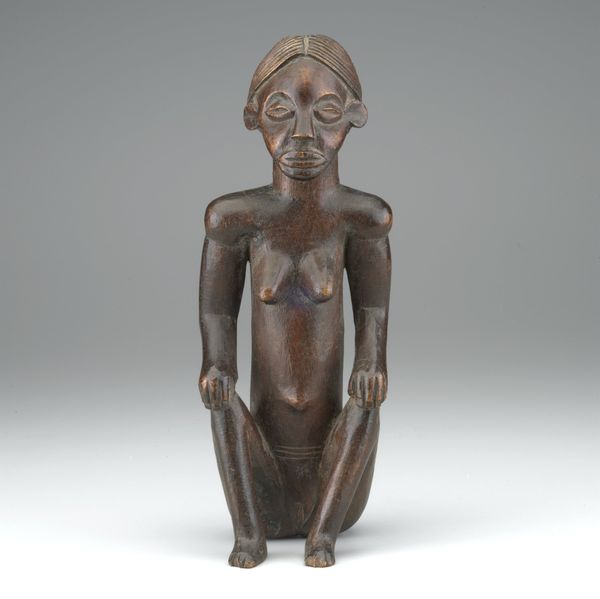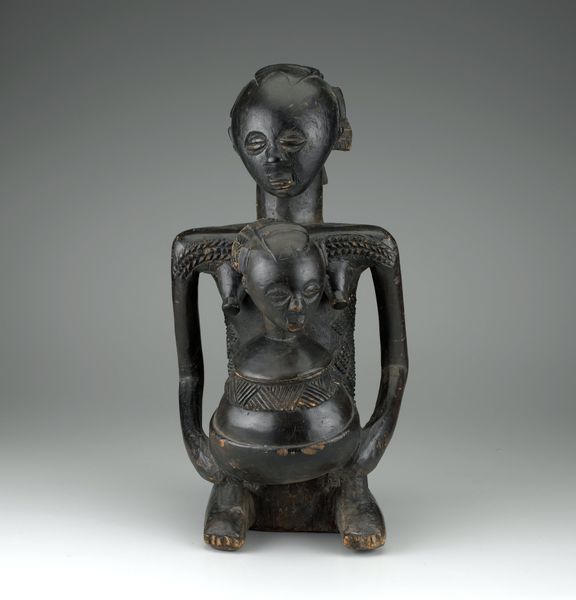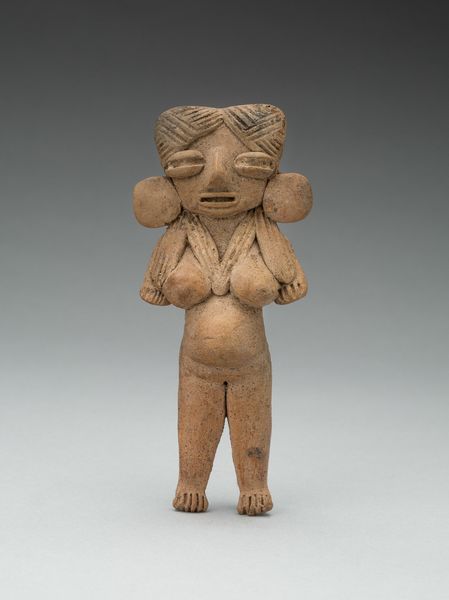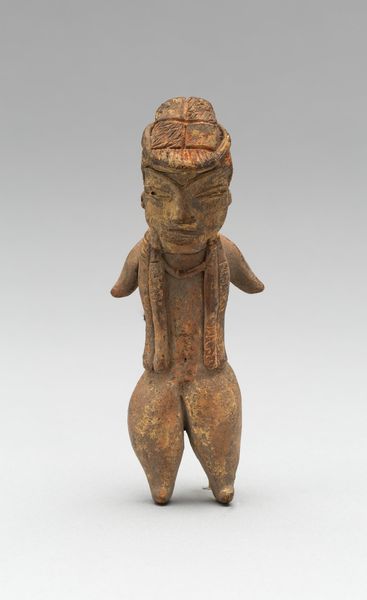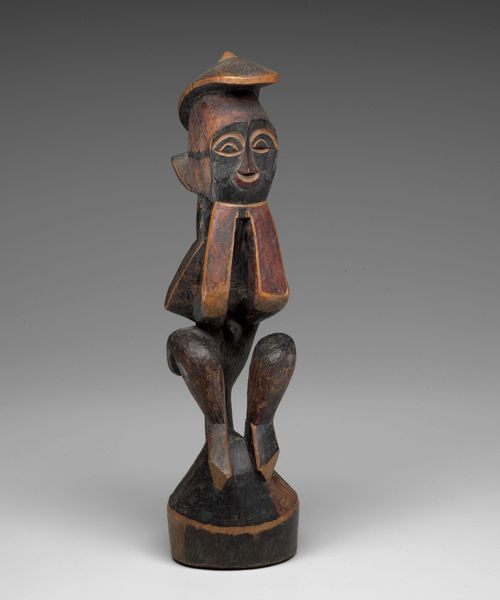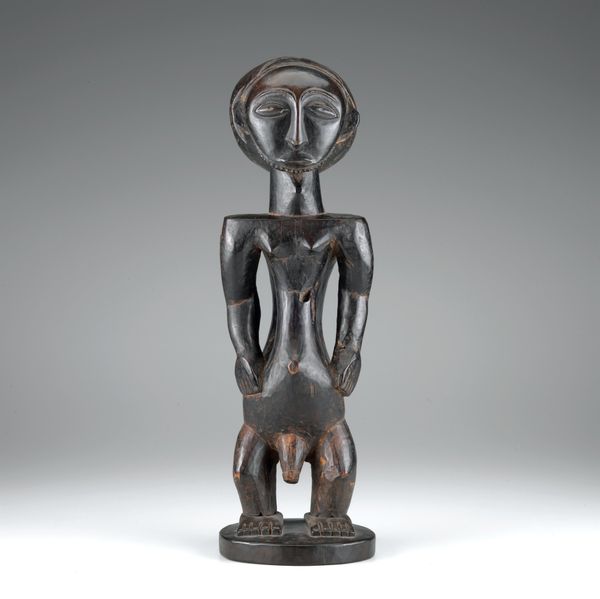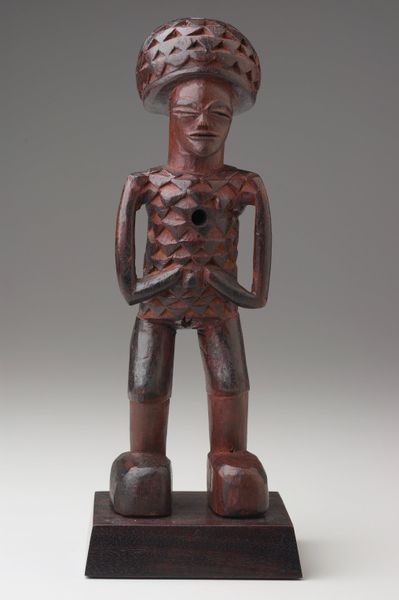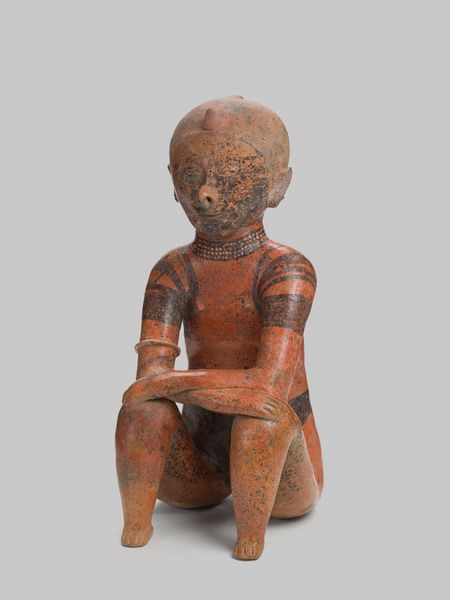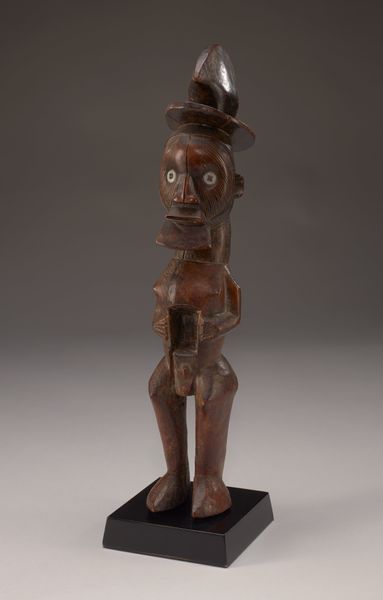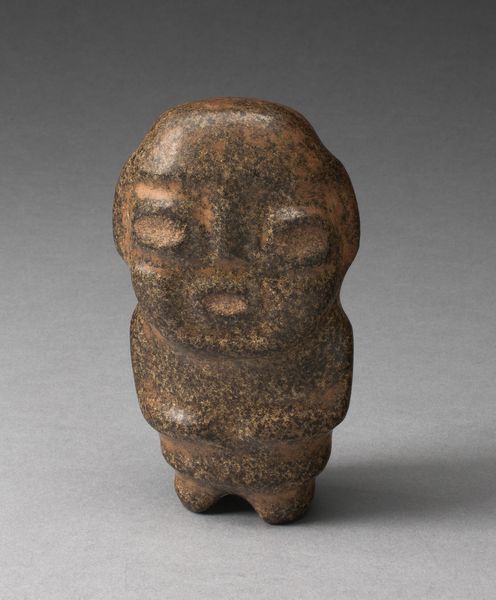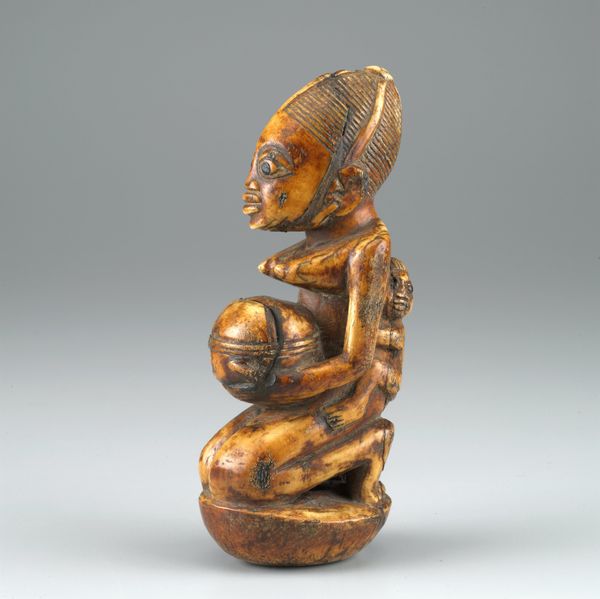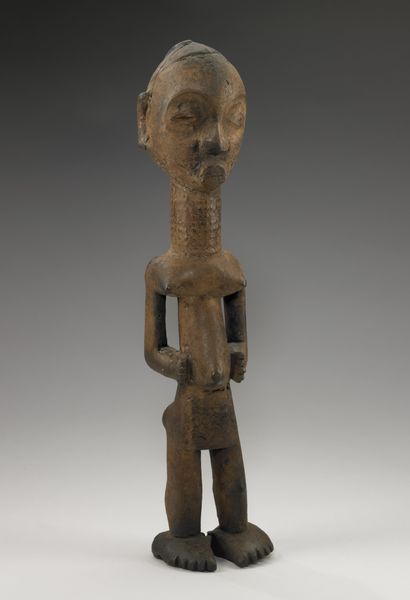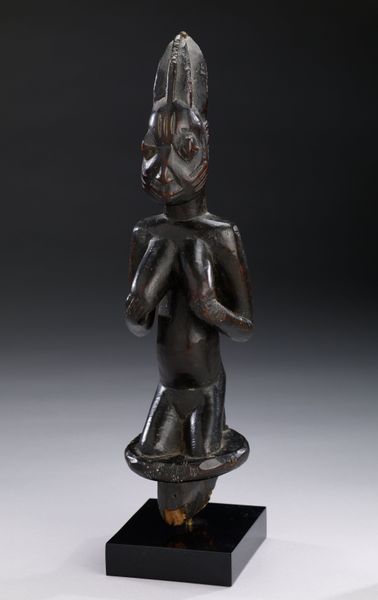
sculpture, wood
#
portrait
#
figuration
#
sculpture
#
wood
Dimensions: 11 5/16 x 4 3/4 x 6 1/2 in. (28.73 x 12.07 x 16.51 cm) (including attached base)
Copyright: Public Domain
Editor: This is "Mboko (Female Cup Bearer)," a wooden sculpture by a Luba artist from around the 19th century, currently at the Minneapolis Institute of Art. The figure’s holding a vessel, and I’m curious about its function. What stands out to you in this piece? Curator: The first thing I notice is the labor invested in carving this wooden sculpture, but let's go deeper than initial aesthetic appreciation. Who would have commissioned such a piece, and what resources – tools, expertise – were involved in the process of turning this tree into a culturally significant object? Editor: It definitely seems like there was a lot of care put into the creation. Were these types of sculptures common for the Luba people at this time? Curator: More specifically, consider the ritual purpose suggested by the cup she holds. What role might the vessel and its contents—perhaps palm wine or some other substance—played in Luba society? Think about the distribution and consumption connected to its crafting. Editor: So, not just about appreciating it as art, but as an object with economic and cultural implications linked to its creation and use. Curator: Exactly. Also, look at the wood itself; can we identify the type, and what significance might it hold? Every aspect of its materiality connects to larger networks of production, value, and meaning within Luba society. We could study the evolution of carpentry tools available and where that puts this piece in the larger timeline of sculpture work. Editor: That's a fascinating way to look at it. It makes me think about all the hidden histories embedded within the object. Curator: Precisely. By centering material processes, we gain a far richer understanding. Next time you see a piece of art, try and ask: what human interactions led to it existing, and how did labor transform it from a simple element into an object of purpose? Editor: That is definitely a lens I'll use from now on. Thanks for opening up a new way to analyze artworks.
Comments
minneapolisinstituteofart almost 2 years ago
⋮
Among the Luba, diviners act as mediators between the spirit world and the living, using a mixture of white kaolin clay and medicinal herbs as part of their practice. This substance is stored a figure like this one, called a mboko. They are carved in the shape of a female figure because the Luba believe that women have a special connection to the spirit world, based on their sacred power to bear children. In the case of the mboko, the figure represents the wife of a contacted spirit.Mboki are also used during the ceremonies for the induction of a new chief. They serve as proof of the chief's authority and are displayed at his door. If lost or damaged, the chief's mboko must be quickly replaced, for it provides protection and prosperity to the community.
Join the conversation
Join millions of artists and users on Artera today and experience the ultimate creative platform.
